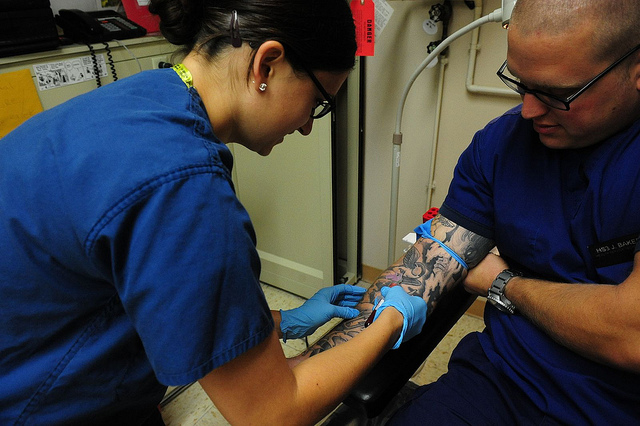During the last decade, workplace wellness programs have become commonplace in corporate America. The
majority of US employers with 50 or more employees now offer the programs. A 2010 meta-analysis that was favorable to workplace wellness programs, published in
Health Affairs, provided support for their uptake. This meta-analysis, plus a well-publicized “success” story from Safeway, coalesced into the so-called
Safeway Amendment in the Affordable Care Act (ACA). That provision allows employers to tie a substantial and increasing share of employee insurance premiums to health status/behaviors and subsidizes implementation of such programs by smaller employers. The assumption was that improved employee health would reduce healthcare costs for employers.
Subsequently, however,
Safeway’s story has been
discredited. And the lead author of the 2010 meta-analysis, Harvard School of Public Health Professor Katherine Baicker, has
cautioned on several occasions that
more research is needed to draw any definitive conclusions. Now, more than four years into the ACA, we conclude that these programs increase, rather than decrease, employer spending on healthcare, with no net health benefit. The programs also cause overutilization of screening and check-ups in generally healthy working-age adult populations, put undue stress on employees and provide incentives for unhealthy forms of weight-loss.
Through a review of the research literature and primary sources, we have found that wellness programs produce a return-on-investment (ROI) of less than 1-to-1 savings to cost. This blog post will consider the results of two compelling study designs -- population-based wellness-sensitive medical event analysis and randomized controlled trials (RCTs). Then it will look at the popular, although weaker, participant vs. non-participant study design. (It is beyond the scope of this posting to question vendors' non-peer-reviewed claims of savings that do not rely on any recognized study design, though those claims are commonplace.)
Population Based Wellness-Sensitive Medical Event Analysis
A wellness-sensitive medical event analysis tallies the entire range of primary inpatient diagnoses that would likely be affected by a wellness program implemented across an employee population. The idea is that a successful wellness program would reduce the number of wellness-sensitive medical events in a population as compared with previous years. By observing the entire population and not just voluntary, presumably motivated, participants or a “high-risk” cohort (meaning the previous period’s high utilizers), both self-selection bias and regression to the mean are avoided.
The field’s only
outcomes validation program requires this specific analysis. One
peer-reviewed study using this type of analysis -- of the wellness program at BJC HealthCare in St. Louis -- examined a population of hospital employees whose overall health status was poor enough that, without a wellness program, they would have averaged more than twice the Healthcare Cost and Utilization Project (HCUP) national inpatient sample (NIS) mean for wellness-sensitive medical events. Yet even this group’s cost savings generated by a dramatic reduction in wellness-sensitive medical events from an abnormally high baseline rate were offset by “similar increases in non-inpatient costs.”
Randomized Controlled Trials and Meta-Analyses
Authors of a 2014 American Journal of Health Promotion (AJHP)
meta-analysis stated: “We found a negative ROI in randomized controlled trials.” This was the first AJHP-published study to state that wellness in general loses money when measured validly. This 2014 meta-analysis, by Baxter et al., was also the first meta-analysis attempt to replicate the findings of the aforementioned meta-analysis published in February 2010 in Health Affairs, which had found a $3.27-to-1 savings from wellness programs.
Another wellness expert, Dr. Soeren Mattke, who has co-written multiple
RAND reports on wellness that are generally unfavorable, such as a study of
PepsiCo’s wellness program published in Health Affairs, dismissed the 2010 paper because of its reliance on
outdated studies. Baicker et. al.’s report was also
challenged by Lerner and colleagues, whose review of the economic literature on wellness concluded that there is too little credible data to draw any conclusions.
Other Study Designs
More often than not wellness studies simply compare participants to “matched” non-participants or compare a subset of participants (typically high-risk individuals) to themselves over time. These studies usually show savings; however, in the most
carefully analyzed case, the savings from wellness activities were exclusively attributable to disease management activities for a small and very ill subset rather than from health promotion for the broader population, which reduced medical spending by only $1 for every $3 spent on the program.
Whether participant vs. non-participant savings are because of the wellness programs themselves or because of fundamentally different and unmatchable attitudes is therefore the key question. For instance, smokers self-selecting into a smoking cessation program may be more predisposed to quit than smokers who decline such a program. Common sense says it is not possible to “match” motivated volunteers with non-motivated non-volunteers, because of the unobservable variable of willingness to engage, even if both groups’ claims history and demographics look the same on paper.
A leading wellness vendor CEO,
Henry Albrecht of Limeade, concedes this, saying: “Looking at how participants improve versus non-participants…ignores self-selection bias. Self-improvers are likely to be drawn to self-improvement programs, and self-improvers are more likely to improve.” Further, passive non-participants can be tracked all the way through the study because they cannot “drop out” from not participating, but dropouts from the participant group -- whose results would presumably be unfavorable -- are not counted and are considered lost to follow-up. So the study design is undermined by two major limitations, both of which would tend to overstate savings.
As an example of overstated savings, consider one study conducted by Health Fitness Corp. (HFC) about the impact of the wellness program it ran for Eastman Chemical’s more than 8,000 eligible employees. In 2011, that program won a C. Everett Koop Award, an annual honor that aims to promote health programs “with demonstrated effectiveness in influencing personal health habits and the cost-effective use of health care services” (and for which both HFC and Eastman Chemical
have been listed as sponsors). The study developed for Eastman’s
application for the Koop awards tested the participants-vs-non-participants equivalency hypothesis.
From that application, Figure 1 below shows that, despite the fact that no wellness program was offered until 2006, after separation of the population into participants and non-participants in 2004, would-be participants spent 8% less on medical care in 2005 than would-be non-participants, even before the program started in 2006. In subsequent presentations about the program, HFC included the 8% 2005 savings as part of 24% cumulative savings attributed to the program through 2008, even though the program did not yet exist.
Figure 1
 Source: http://www.thehealthproject.com/documents/2011/EastmanEval.pdf
Source: http://www.thehealthproject.com/documents/2011/EastmanEval.pdf
The other common study design that shows a positive impact for wellness identifies a high-risk cohort, asks for volunteers from that cohort to participate and then tracks their results while ignoring dropouts. The only control is the cohort’s own previous high-risk scores. In studying health promotion program among employees of a Western U.S. school district, Brigham Young University researcher
Ray Merrill concluded in 2014: “The worksite wellness program effectively lowered risk measures among those [participants] identified as high-risk at baseline.”
However, using participants as their own control is not a well-accepted study design. Along with the participation bias, it ignores the
possibility that some people decline in risk on their own, perhaps because (independent of any workplace program) they at least temporarily lose weight, quit smoking or ameliorate other risk factors absent the intervention. Research by Dr. Dee Edington, previously at the University of Michigan, documents a substantial “
natural flow of risk” absent a program.
Key Mathematical and Clinical Factors
Data compiled by the
Healthcare Cost and Utilization Project (HCUP) shows that only 8% of hospitalizations are primary-coded for the wellness-sensitive medical event diagnoses used in the BJC study. To determine whether it is possible to save money, an employer would have to tally its spending on wellness-sensitive events just like HCUP and BJC did. That represents the theoretical savings when multiplied by cost per admissions. The analysis would compare that figure to the incentive cost (now averaging
$594) and the cost of the wellness program, screenings, doctor visits, follow-ups recommended by the doctor, benefits consultant fees and program management time. For example, if spending per covered person were $6,000 and hospitalizations were half of a company’s cost ($3,000), potential savings per person from eliminating 8% of hospitalizations would be $240, not enough to cover a typical incentive payment even if every relevant hospitalization were eliminated.
There is no clinical evidence to support the conclusion that three pillars of workplace wellness -- annual workplace screenings or annual checkups for all employees (and sometimes spouses) and incentives for weight loss -- are cost-effective. The U.S. Preventive Services Task Force (USPSTF) recommends that only blood pressure be screened annually on everyone. For other biometric values, the benefits of annual screening (as all wellness programs require)
may not exceed the harms of potential false positives or of over-diagnosis and overtreatment, and only a subset
of high-risk people should be screened, as with glucose. Likewise, most literature finds that annual checkups confer
no net health benefit for the asymptomatic non-diagnosed population. Note that in both cases, harms are compared with benefits, without considering the economics. Even if harms roughly equal benefits,
adding screening costs to the equation creates a
negative return.
Much of wellness is now about providing incentivizes for weight loss. In addition to the lack of evidence that weight loss saves money (Lewis, A, Khanna V, Montrose S., "It’s time to disband corporate weight loss programs," Am J Manag Care, In press, February 2015), financial incentives tied to weight loss between two weigh-ins may encourage overeating before the first weigh-in and crash-dieting before the second, both of which are
unhealthy. One
large health plan offers a weight-loss program that is potentially unhealthier still, encouraging employees to use the specific
weight-loss drugs that Dartmouth’s Steven Woloshin and Lisa Schwartz have argued in the Journal of the American Medical Association never should have been approved because of the drugs’ potential harms.
In sum, with tens of millions of employees subjected to these unpopular and expensive programs, it is time to reconfigure workplace wellness. Because today’s conventional programs fail to pay for themselves and confer no proven net health benefit (and may on balance hurt health through over-diagnosis and promotion of unhealthy eating patterns), conventional wellness programs may fail the Americans with Disabilities Act’s “business necessity” standard if the financial forfeiture for non-participants is deemed coercive, as is alleged in
employee lawsuits against three companies, including
Honeywell.
Especially in light of these lawsuits, a viable course of action -- which is also the economically preferable solution for most companies and won’t harm employee health -- is simply to pause, demand that
vendors and consultants answer open questions about their programs and await more guidance from the administration. A standard that “wellness shall do no harm,” by being in compliance with the USPSTF (as well as the preponderance of the literature where the USPSTF is silent), would be a good starting point.
 Source: http://www.thehealthproject.com/documents/2011/EastmanEval.pdf
The other common study design that shows a positive impact for wellness identifies a high-risk cohort, asks for volunteers from that cohort to participate and then tracks their results while ignoring dropouts. The only control is the cohort’s own previous high-risk scores. In studying health promotion program among employees of a Western U.S. school district, Brigham Young University researcher Ray Merrill concluded in 2014: “The worksite wellness program effectively lowered risk measures among those [participants] identified as high-risk at baseline.”
However, using participants as their own control is not a well-accepted study design. Along with the participation bias, it ignores the possibility that some people decline in risk on their own, perhaps because (independent of any workplace program) they at least temporarily lose weight, quit smoking or ameliorate other risk factors absent the intervention. Research by Dr. Dee Edington, previously at the University of Michigan, documents a substantial “natural flow of risk” absent a program.
Source: http://www.thehealthproject.com/documents/2011/EastmanEval.pdf
The other common study design that shows a positive impact for wellness identifies a high-risk cohort, asks for volunteers from that cohort to participate and then tracks their results while ignoring dropouts. The only control is the cohort’s own previous high-risk scores. In studying health promotion program among employees of a Western U.S. school district, Brigham Young University researcher Ray Merrill concluded in 2014: “The worksite wellness program effectively lowered risk measures among those [participants] identified as high-risk at baseline.”
However, using participants as their own control is not a well-accepted study design. Along with the participation bias, it ignores the possibility that some people decline in risk on their own, perhaps because (independent of any workplace program) they at least temporarily lose weight, quit smoking or ameliorate other risk factors absent the intervention. Research by Dr. Dee Edington, previously at the University of Michigan, documents a substantial “natural flow of risk” absent a program.












